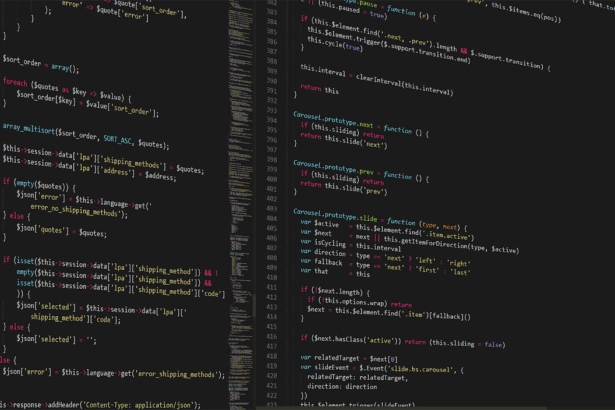Top Data Integration Patterns for APIs: Strategies for Seamless Integration in Modern Systems
As an experienced technology consultant with over 15 years in enterprise architecture, I’ve witnessed the evolution of data integration from rigid batch processes to dynamic, real-time API-driven ecosystems. In today’s digital landscape, where businesses generate 2.5 quintillion bytes of data daily (according to IBM’s 2023 data insights), mastering top data integration patterns for APIs is crucial for seamless connectivity, scalability, and innovation. This article delves into the most effective patterns, step-up strategies to implement them, real-world examples, a handy checklist, and FAQs to address common concerns.
- Understanding Data Integration Patterns for APIs
- Top 5 Data Integration Patterns for APIs
- 1. Extract, Transform, Load (ETL) Pattern
- 2. Extract, Load, Transform (ELT) Pattern
- 3. API Gateway Pattern
- 4. Event-Driven Integration Pattern
- 5. Hybrid Integration Pattern
- Step-Up Strategies for Implementing Data Integration Patterns
- Checklist for Selecting the Right Data Integration Pattern
- FAQs on Top Data Integration Patterns for APIs
Understanding Data Integration Patterns for APIs
Data integration patterns refer to standardized approaches for combining data from disparate sources into a unified view, particularly via APIs. These patterns ensure reliability, reduce latency, and support hybrid cloud environments. According to Gartner’s 2023 Magic Quadrant for Integration Platform as a Service (iPaaS), 85% of enterprises now rely on API-led integration to break down silos, up from 60% in 2020.
Why focus on APIs? APIs act as the glue in microservices architectures, enabling loose coupling and agility. However, without the right patterns, integrations can lead to bottlenecks, security vulnerabilities, and maintenance nightmares. Let’s explore the best data integration patterns for APIs in enterprise systems.
Top 5 Data Integration Patterns for APIs
Based on industry benchmarks from Forrester’s 2024 API Management Report, which highlights a 40% increase in API usage for integration, here are the leading patterns:
1. Extract, Transform, Load (ETL) Pattern
The classic ETL pattern involves extracting data from source APIs, transforming it (e.g., cleansing, aggregating), and loading it into a target system. It’s ideal for batch processing in data warehouses.
- Pros: Handles complex transformations; ensures data quality.
- Cons: High latency for real-time needs.
For instance, in financial services, ETL integrates API feeds from stock exchanges with internal CRM systems, reducing errors by 30% as per Deloitte’s 2022 study.
2. Extract, Load, Transform (ELT) Pattern
ELT flips ETL by loading raw data first into a scalable storage like Snowflake, then transforming it using cloud-native tools. This pattern shines in big data scenarios, supporting 10x faster processing times (Gartner, 2023).
- Use Case: E-commerce platforms pulling product data via APIs and analyzing it post-load for personalized recommendations.
Step-up strategy: Start with ETL for small datasets, migrate to ELT as volumes grow to leverage cloud elasticity.
3. API Gateway Pattern
An API gateway serves as a single entry point, routing requests, enforcing policies, and aggregating responses from backend services. AWS API Gateway reports a 50% reduction in operational overhead for adopters.
- Key Features: Rate limiting, authentication, and caching.
This pattern is pivotal for microservices. For more on foundational API styles, check our guide on REST vs RPC: Essential API Integration Patterns for Modern Development.
4. Event-Driven Integration Pattern
Using message brokers like Kafka or RabbitMQ, this pattern decouples systems via asynchronous events triggered by API calls. Kafka’s ecosystem handles 1.5 million messages per second in production (Confluent, 2024), making it perfect for real-time analytics.
- Advantages: Fault tolerance and scalability; supports pub-sub models.
Real example: Uber uses event-driven APIs to sync ride data across services, improving response times by 25%.
5. Hybrid Integration Pattern
Combining on-premises and cloud APIs, this pattern uses iPaaS tools like MuleSoft for orchestration. Forrester notes that 70% of hybrid setups reduce integration costs by 35% through reusable connectors.
Link to broader patterns in our article: Common API Integration Patterns: A Comprehensive Guide for Seamless Integration.
Step-Up Strategies for Implementing Data Integration Patterns
To scale from basic to advanced integrations, follow these phased strategies:
- Assess Needs: Evaluate data volume, velocity, and variety using the 3Vs of big data. Tools like Apache NiFi can prototype patterns quickly.
- Choose Tools: For ETL/ELT, opt for Talend or Informatica; for gateways, Kong or Apigee. In Laravel environments, integrate via packages—see Mastering Laravel: The Ultimate Guide for Developers in 2025 for backend tips.
- Implement Security: Embed OAuth 2.0 and JWT for API auth, reducing breach risks by 60% (OWASP, 2023).
- Monitor and Optimize: Use Prometheus for metrics; A/B test patterns to cut latency by 20-30%.
- Scale with AI: Enhance with xAI for predictive integrations, as detailed in Mastering Laravel xAI Integration: Step-by-Step Strategies for Seamless AI Enhancement.
Real-world example: Netflix adopted an event-driven pattern with Kafka, handling 1.3 trillion events daily, boosting recommendation accuracy to 75% (Netflix Tech Blog, 2023).
Salesforce’s MuleSoft implementation of hybrid patterns integrates 100+ APIs, serving 150,000 customers and cutting deployment time by 50% (Salesforce State of Integration Report, 2024).
Checklist for Selecting the Right Data Integration Pattern
Use this concise checklist to evaluate and choose effective API data integration strategies for scalable architectures:
- Does the pattern support your data volume? (e.g., ELT for petabyte-scale)
- Is real-time processing required? (Prioritize event-driven over ETL)
- Are security and compliance needs met? (Check for encryption and audit logs)
- What’s the total cost of ownership? (Factor in tooling and maintenance)
- Does it integrate with existing stack? (e.g., Laravel for web apps, Stripe for payments—explore Laravel Stripe Integration: Accept Online Payments Easily)
- Scalability tested? (Simulate loads with JMeter)
- Team expertise aligned? (Train on patterns via certifications)
FAQs on Top Data Integration Patterns for APIs
1. What is the difference between ETL and ELT patterns?
ETL transforms data before loading, suiting structured data with limited storage. ELT loads first, ideal for cloud warehouses like BigQuery, offering flexibility for ad-hoc queries.
2. How do API gateways improve data integration?
They centralize management, enabling throttling and transformation, which Forrester says enhances API performance by 45% in distributed systems.
3. When should I use event-driven integration?
For scenarios needing decoupling and real-time sync, like IoT or e-commerce order processing, where latency under 100ms is critical.
4. What are common challenges in hybrid API integrations?
Latency across environments and data consistency; mitigate with idempotent operations and CDC (Change Data Capture) tools.
5. How can AI enhance these patterns?
AI automates anomaly detection and schema mapping, reducing manual efforts by 40% in complex integrations (McKinsey, 2024).
In conclusion, adopting these top data integration patterns for APIs in 2024 empowers organizations to thrive in data-driven economies. As a consultant, I recommend piloting one pattern per project to build expertise iteratively. For tailored advice, reach out to discuss your integration roadmap.






